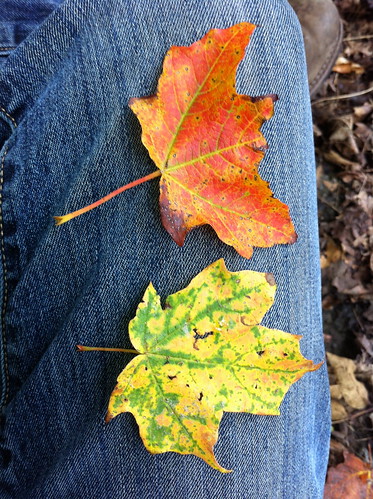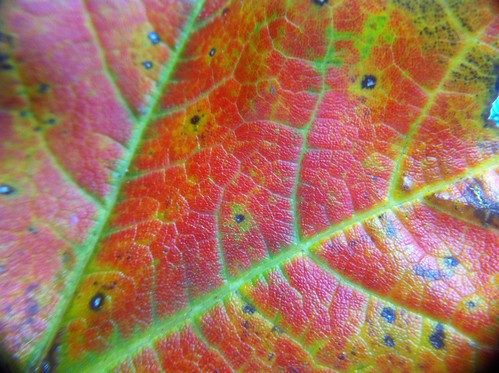So have the trees, apparently.

Don't get me wrong... most of the trees are as green as ever. Still, just a few trees... trees in unusually wet or dry environments, or trees that are otherwise stressed by their environment... are starting to show a few vivid colorful leaves.
I've only been through three Vermont autumns, so I often find myself wondering when and how each tree species will respond to the changing weather. It's been more than just a casual question, lately, because I've been mapping a lot of natural communities at work, and in many cases vivid fall foliage is available in photos! I see a rainbow of colors across the landscape, but often wonder what exactly I am looking at.
View Larger Map
The red trees above are probably red maples; the yellow ones perhaps black ash. It's hard to say though (Which ash species again was it that turns purple? White ash?).
To answer these questions, I started a fun citizen science project on iNaturalist.
iNaturalist is a great place to track the color of leaves, because each observation comes with a photo, a location, and a time. If I get enough people adding to this, we could build up an expansive database of how leaf color varies over the year and from year to year. Not only will that help me make maps of different natural communities, but it will help track how our changing climate affects the life cycle of our trees as well. Besides... everyone loves pictures of fall color, and most people are taking these photos anyway. This will be a fun way to share them with others.
This project is a place to document and share color patterns. I'm most interested in anything you can see in a high-resolution aerial photo - not just overstory trees but wetland and meadow plants as well . For instance, the goldenrods that bloom in late summer can definitely be seen from aerial photos. Even the patterns of sphagnum moss in bogs can sometimes be seen from above.
Remember... location and date are important for this project, so if you aren't sure where or when a photo was taken, it's probably better to leave that one out.
Check back with this post to see updates below!



No comments:
Post a Comment